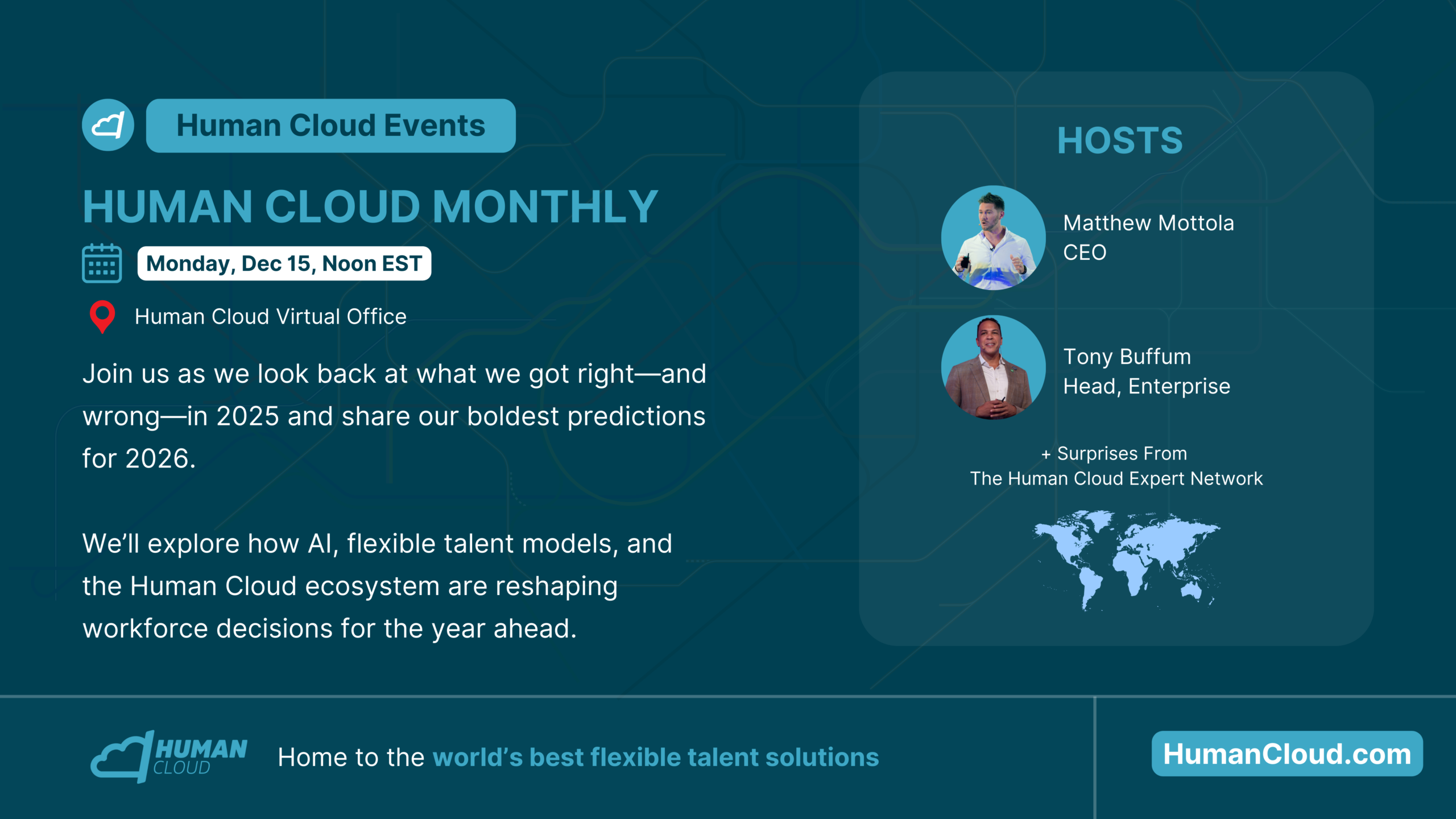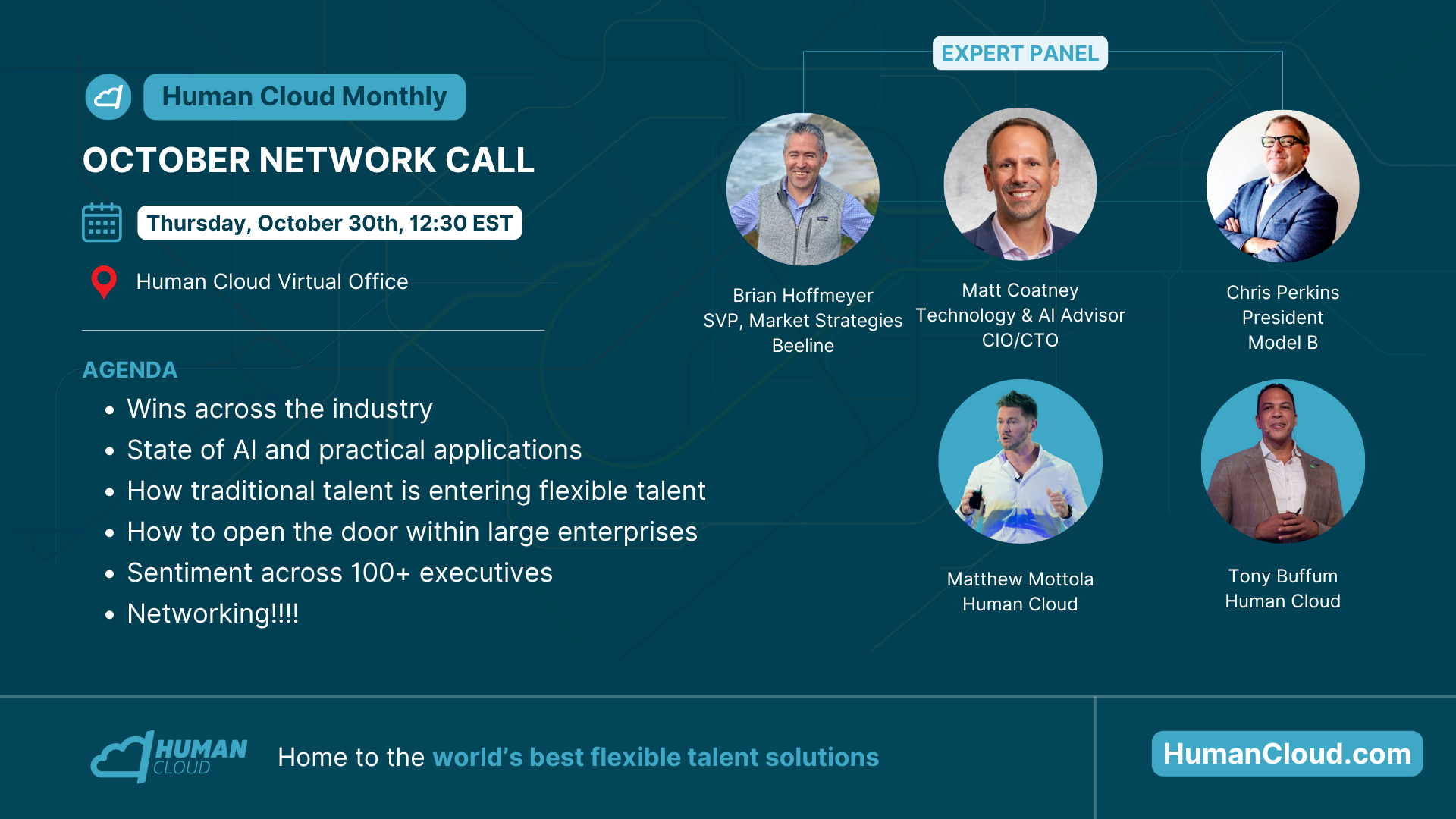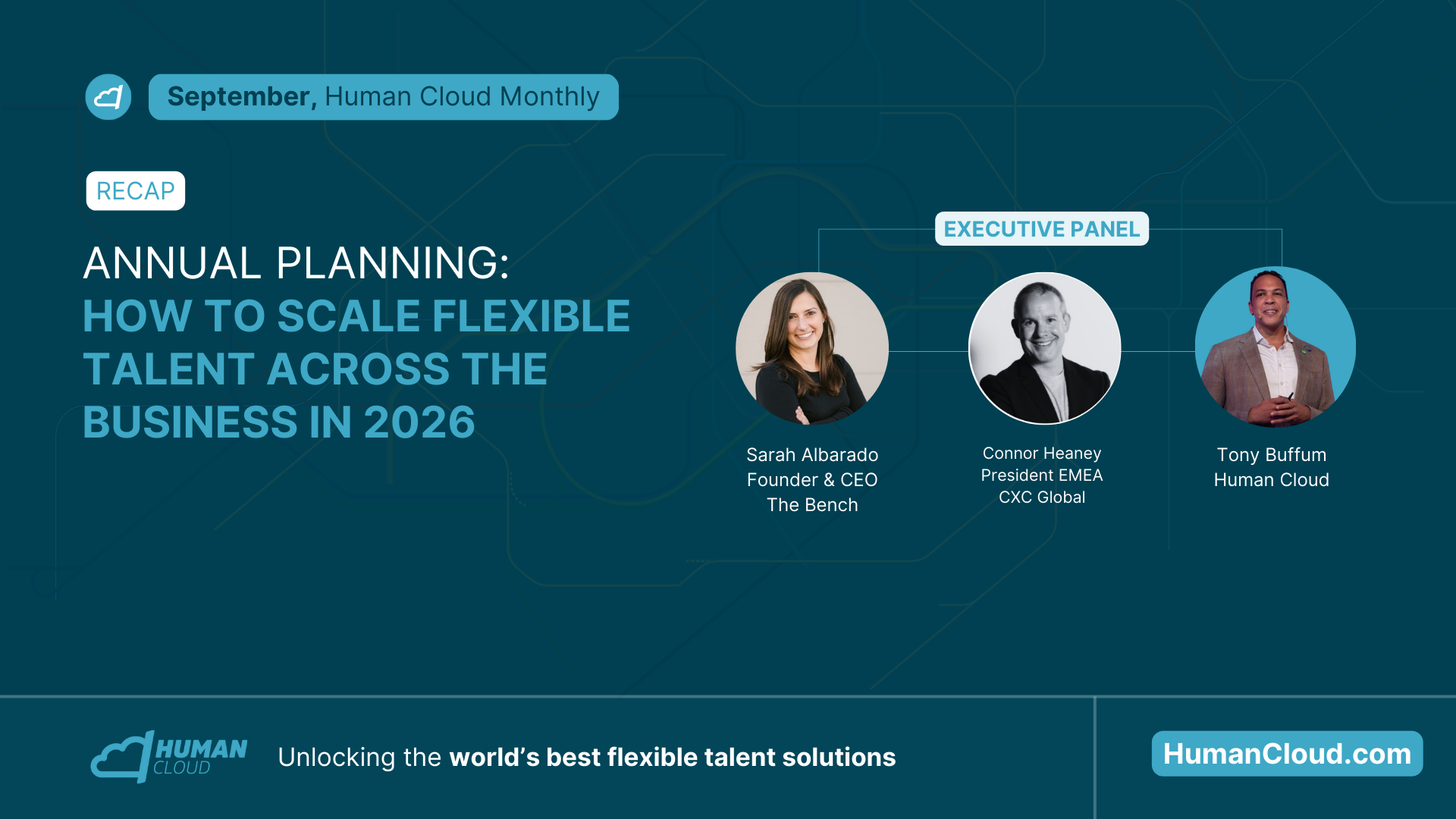🚨 Human Cloud Acquires PeopleGPT to Build the Premier AI-Driven HR Community 🚨
HC network monthly Debrief, July 2025
I Didn’t Get a Promotion—But I Got an Agent
How AI, labor uncertainty, and workforce flexibility are shaping the new world of work
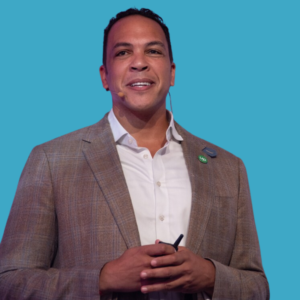
Tony Buffum
Head, Enterprise Strategy
Share this!
Executive Highlights
1:08
0:44
0:52
1:32
0:46
Summary
A friend of mine works in product marketing at a mid-sized tech company. Earlier this year, she was gunning for a promotion. Instead, she got something unexpected: access to an internal AI agent.
This agent was trained on her projects, synced with her meetings, and could draft everything from strategy decks to follow-up emails. Her initial reaction? “So… I didn’t get a raise, but I got a robot?” Skepticism gave way to surprise as her output doubled. She stopped spending Sunday nights polishing spreadsheets and started focusing on the work that actually drives business impact—strategy, collaboration, leadership.
And here’s the kicker: the promotion came anyway, faster than she expected.
She wasn’t replaced by AI. She was augmented by it.
That story isn’t rare anymore,it’s a sign of what’s ahead.. The nature of work is shifting dramatically, and it’s not just about task replacement. It’s about how technology, economic uncertainty, and workforce expectations are reshaping how we define value.
Major companies—and their HR leaders—are taking notice. In April, Nickel LaMarsh wrote a standout piece titled “Embracing the Future of HR by Becoming an AI-First Enterprise”, highlighting how HR teams can adopt generative AI to improve efficiency and reduce costs while freeing up time for more strategic, high-impact work. Just one month later, The Wall Street Journal published a story about Moderna going so deep into AI integration that they merged their IT department with HR under the CHRO.
So, where is all this going? To understand the road ahead, it helps to look at three interconnected forces shaping work right now: AI Agents & Human Augmentation, Labor Market Dynamics and Economic Uncertainty, and Worker & Workforce Optionality.
1. AI Agents & Human Augmentation
The rise of agentic AI—intelligent assistants that can take initiative, handle tasks, and collaborate with humans—is accelerating fast. PwC forecasts that within the next 12–24 months, these agents will reshape enterprise operations, helping people operate more strategically at scale.
Big names are already moving. Companies like ServiceNow, Salesforce, and SAP are deploying AI agents to streamline support workflows—cutting case-handling time by up to 52% while keeping final oversight in human hands.
And it’s not just technology departments driving this shift. KPMG is teaching interns and staff how to work with AI agents. In some cases, agents handle up to 80% of a task, with human supervision refining the results and improving output quality. According to McKinsey, companies adopting generative AI in customer service functions are already seeing:
- 14% faster issue resolution
- 9% reductions in handling time
- 25% lower employee attrition
This isn’t hype. It’s happening—and those who learn to lead with agents are gaining the edge.
2. Labor Market Dynamics & Economic Uncertainty
While tech is surging, the broader economic landscape remains murky.
According to the Cornell ILR Labor Action Tracker, 2023 saw over 470 strikes involving more than 539,000 workers—the highest level of strike activity since the 1980s. What’s different this time? Technology was a major driver of the unrest. From SAG-AFTRA to the United Auto Workers, unions are demanding clarity, consent, and compensation around AI, automation, and digital displacement.
At the same time, the U.S. labor market shows mixed signals:
- Job growth averaged 111K per month in Q1, rising to 150K/month in Q2
- Unemployment held steady around 4.1–4.2%
- The Fed kept interest rates at 4.25%–4.50% in July, citing inflation risks despite solid employment data (Reuters)
- Deloitte projects GDP growth moderating to ~2.2% in 2025, with higher unemployment expected by 2026
- Trade tensions (e.g. 50% tariffs on Brazilian goods) and ambiguous global policy continue to fuel business planning uncertainty
Meanwhile, hiring remains cautious. McKinsey and Indeed both report slower entry-level demand and more conservative forecasts around attrition and headcount planning for the second half of 2025.
In short: It’s a solid labor market—but navigating it feels like forecasting through fog.
3. Flexibility, Independent Work & Workforce Optionality
Against this backdrop, people are looking for something else: resilience.
Professionals want multiple income streams, flexible hours, and the ability to chart their own course—especially in a world where AI is reshaping roles faster than ever. Employers, too, are rethinking talent models. They want the ability to adapt quickly, redeploy resources, and bring in specialized skills on-demand.
And the data backs it up:
- McKinsey estimates 36% of U.S. workers are now in freelance, contract, or gig roles—with projections pointing to ~50% by mid-decade
- Independent workers tend to upskill faster, especially with AI tools, giving employers faster access to critical expertise
- Companies embracing flexible models are better positioned to respond to economic shifts, tech disruptions, and global volatility
Flexibility isn’t a trend—it’s a survival strategy.
The world of work is in motion. But if there’s one thing we can be optimistic about, it’s this: people and organizations are adapting in bold, creative ways—and the future of work is being built, not inherited.
✅ Key Takeaways
- AI agents are here—and those who embrace augmentation, not resistance, are seeing faster promotions, higher productivity, and real competitive advantage.
- The labor market is strong, but unpredictable. With inflation, tariffs, and policy shifts on the horizon, both workers and companies are trying to plan for a moving target.
- Flexibility is the new currency. Independent work, agile teams, and skill-based workforce models are reshaping what career growth—and organizational resilience—really looks like.
Featured executives

Sasha Smith
COO, Plannernet
Leading Event Professional Talent Platform
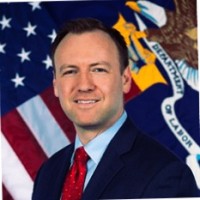
Jonathan Wolfson
Policy Development, Ex Chief Legal Officer and Chief Policy Director

Yan (Stella) Si
Chief AI EIR
PhD Student, Computing and Data Science

Mitch Cutino
COO, Gig Smart
Leading Blue Collar Talent Platform

John Schauf
Airtmt
Leading Stablecoin Payments Provider
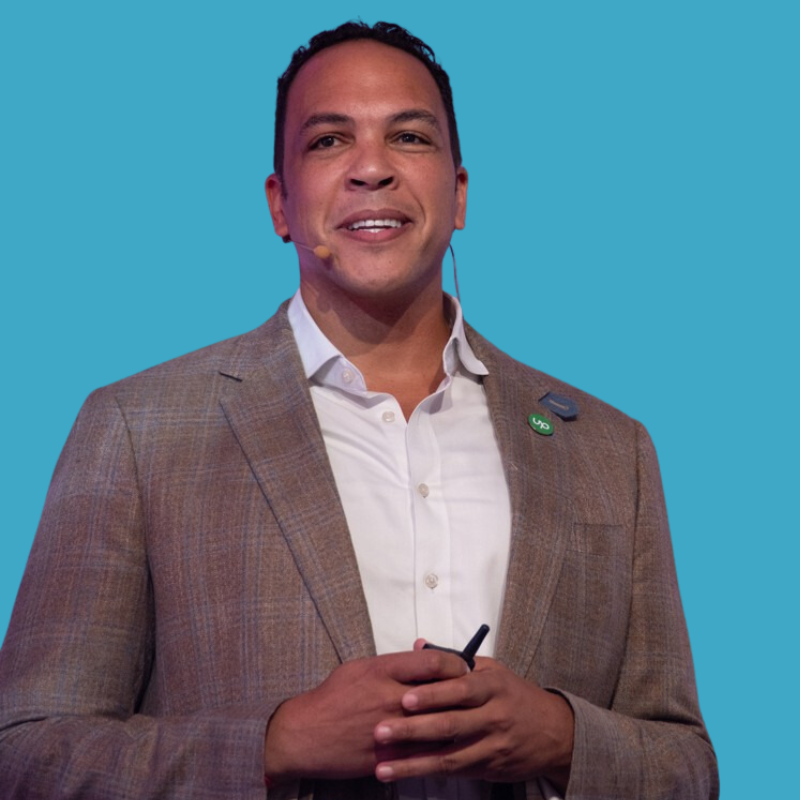
Tony Buffum
Head, Enterprise Strategy
Former VP of HR Client Strategy at Upwork, CHRO at FLIR Systems and VP of HR at Stanley Black & Decker.

